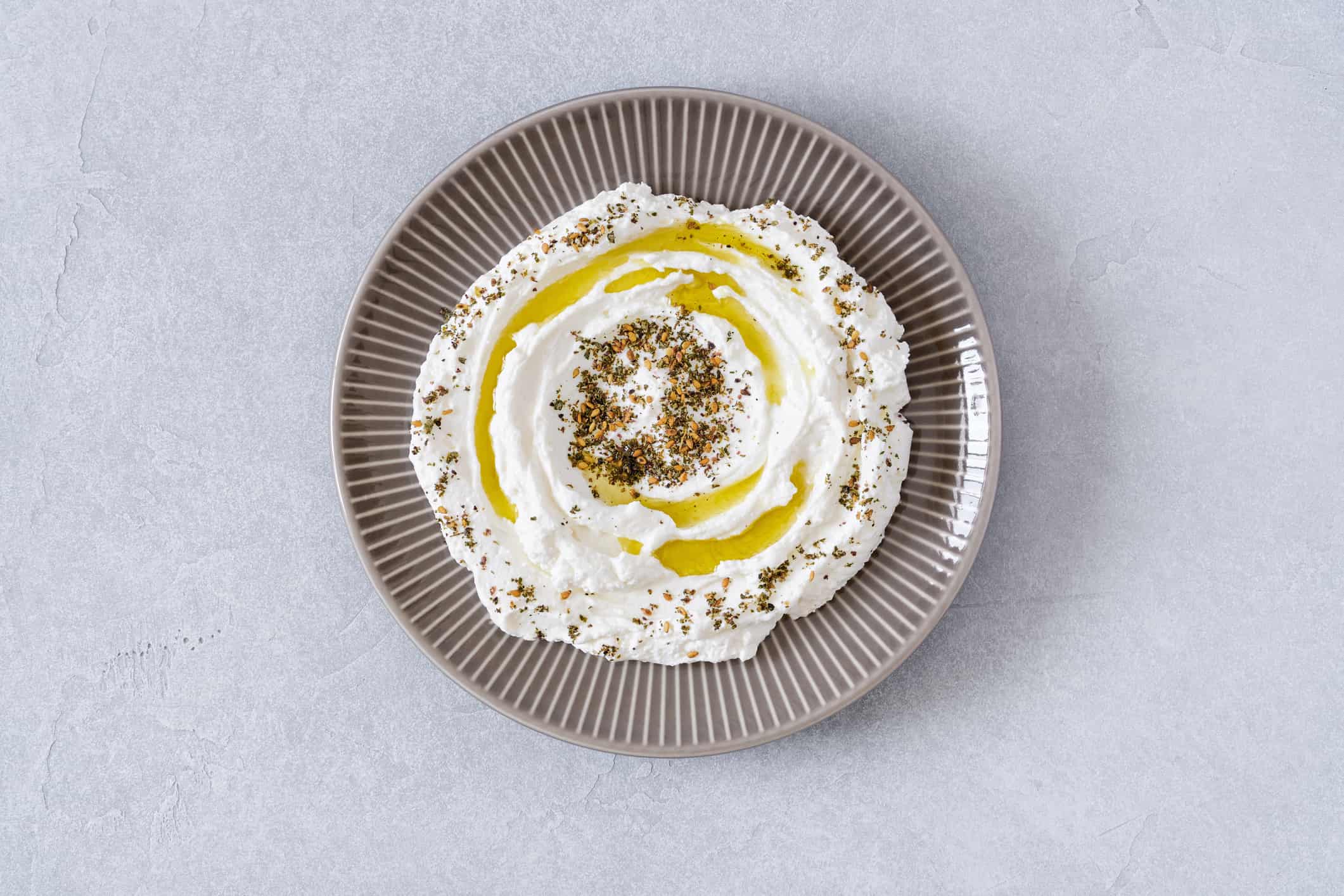In the choice between Labneh vs. Greek yogurt, both offer creamy and tangy flavorings to any mealtime, snack, or treat. However, whatever similarities these custardy products share, they also have some significant differences that should be considered. Labneh is a spreadable, and typically saltier cousin to the less strained, usually thicker Greek yogurt. While plain Greek yogurt can be mixed down to mimic the texture of labneh, these two dairy-based products are different in flavor and texture.
In this post, we’ll take a closer look at these differences and learn about how each one is made. We’ll go through the history of each and examine how each one can be utilized in different cuisines and mealtimes. Once you’re done reading, trips to the grocery store will be that much easier. You’ll know which to pick in your ponderings of labneh vs. Greek yogurt, and maybe try out a new recipe! Let’s get started.
- The must-have convenient reference guide for every home cook!
- Includes more than 8,000 substitutions for ingredients, cookware, and techniques.
- Save time and money on by avoiding trips to grab that "missing" ingredient you don't really need.
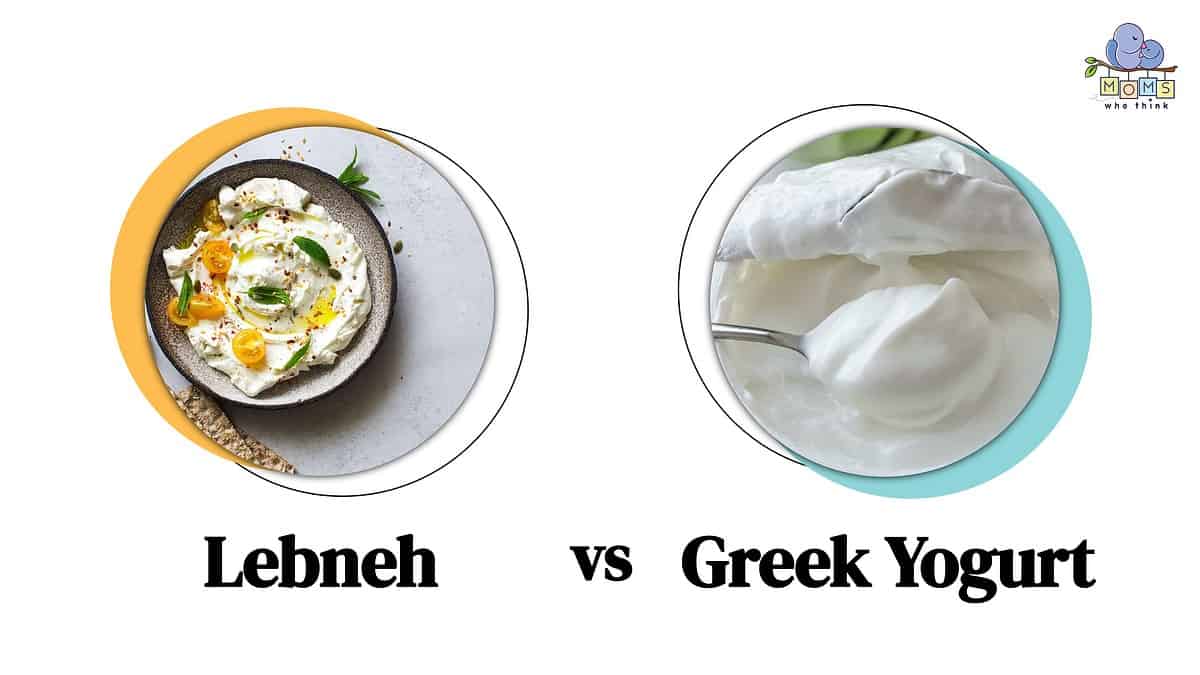
©
Labneh vs. Greek Yogurt: What is The Difference?
As mentioned above, it is the consistency and the flavoring that really set apart labneh and Greek yogurt. Labneh is a thinner, spreadable, and salty option. Meanwhile, Greek yogurt is plain and tangy in flavor. However, you can sweeten it with fruit and other added flavors. Let's examine their differences with a little more specificity.
What is Labneh?
Labneh is a variation of yogurt, kind of like a soft cheese. It goes through the classic steps of milk to yogurt before it is strained to a cheese yogurt consistency. Add some salt, oil, and other spices, along with vegetables or fruits, and herbs! Labneh is a cooling and delicious topping, dip, or base sauce.
History And Origin
Labneh, also called labne, is a Lebanese form of yogurty, soft cheese. The process of milk fermentation is well over 2,000 years old. There is an ancient legend that it was an Arab merchant who first discovered curdled milk. The story goes that he was traveling the hot desert with a sheep-stomach bag of dairy milk. Upon leaving the bag out in the sun for too long, he discovered it had curdled into a spreadable mixture! There are lots of historical indicators that regions of Jordan, Istanbul, and Africa have been dairy farming and curdling milk for thousands of years. Thus labneh, with its extra-straining process has likely been a staple of Middle Eastern cooking styles for a long, long time. It can be dried and preserved in oil or rolled into balls for a mozzarella-like eating experience (via Master Class).
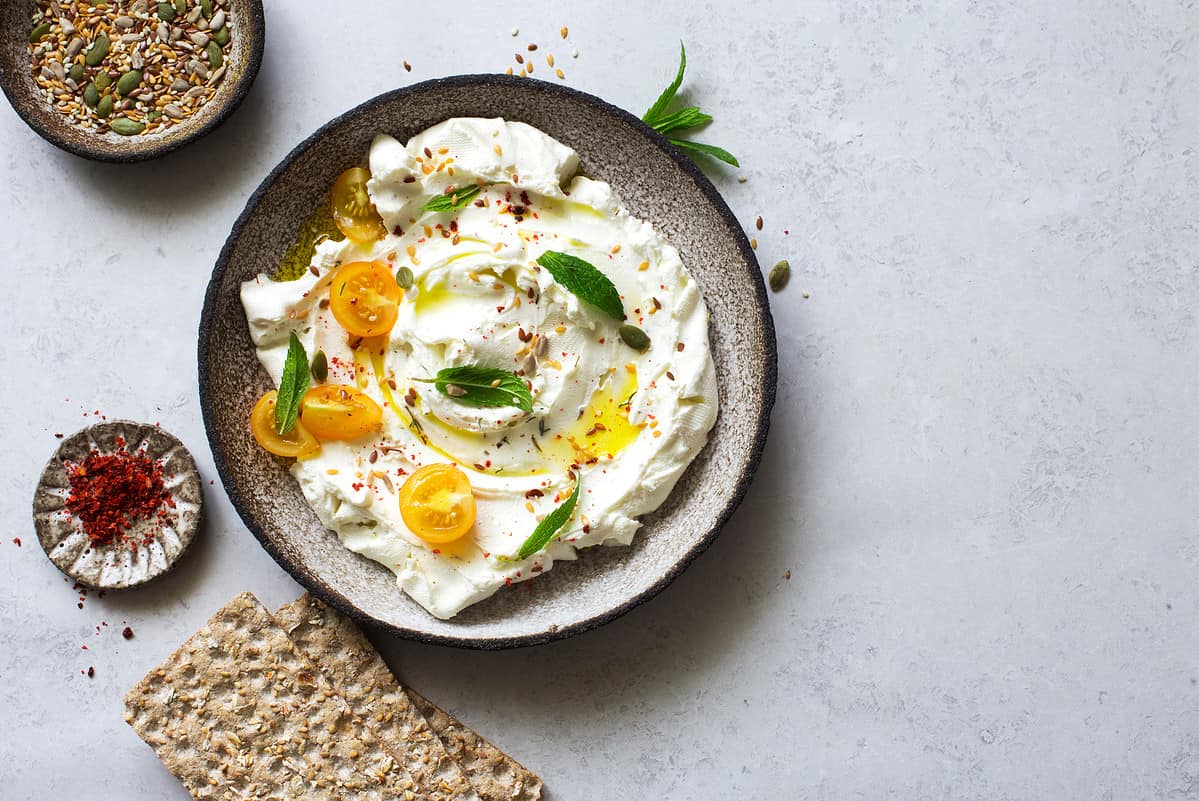
Labneh is a soft and spreadable cheese that can be paired with all kinds of garnishings and in lots of meals.
©iStock.com/annata78
How Labneh is Made
Labneh is formed as a yogurt with much further straining than other yogurt types. Next, the dairy milk has gone through the souring process, with the help of bacteria like Lactobacillus bulgaricus and Streptococcus thermophilus. The result is a tangier, thicker, and protein-filled pre-yogurt product. The next step is to remove the whey and other proteins that have gathered in the fermentation process. It is this straining that gives Labneh its cheesy yogurt consistency. With the addition of garnishes and oil, this dip can be a flavorful experience as part of any meal or snack time.
Labneh vs Greek Yogurt Nutrition: Calorie, Protein, and Fat Comparison
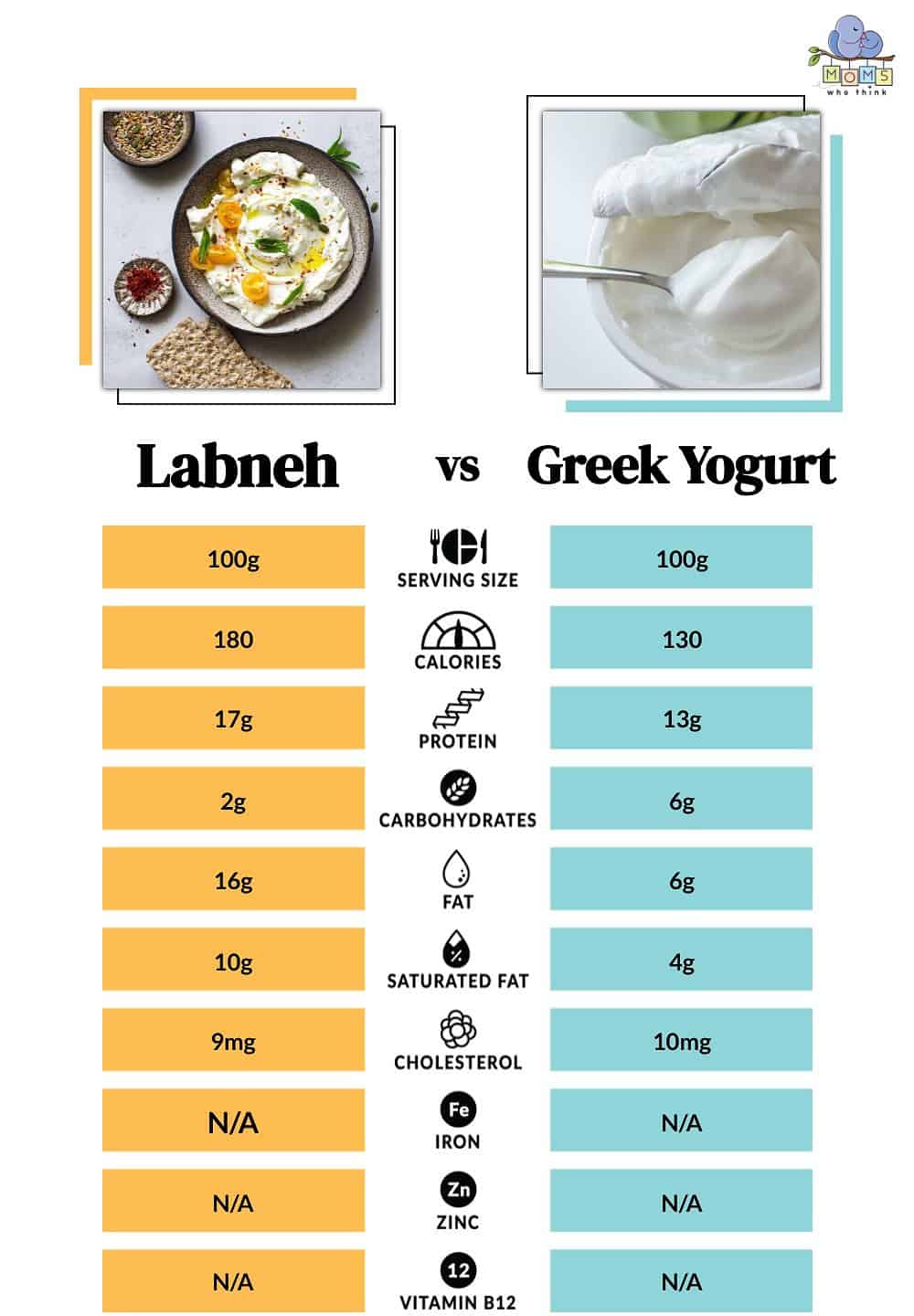
A nutritional comparison of labneh and Greek yogurt. Keep in mind differences will emerge between brands and what kind of milk is used in Greek yogurts.
©
Like yogurt, labneh has the nutritional value of added probiotics and the many vitamins and minerals that are present in dairy. There is calcium, vitamin A, iron, and small amounts of phosphorous, potassium, and magnesium present in the mixture. Labneh can be very dense in fats and proteins but typically is light in carbohydrates.
The process for Greek yogurt gives the mixture a high volume of proteins, probiotics, and other vitamins and nutrients. The fat and protein content of the Greek yogurt will depend on what kind of milk is used. The sugar content also depends on if there are any added sugars or flavorings. There are B12 and Vitamin A present in Greek yogurt as well as minerals like riboflavin, pantothenic acid, calcium, potassium, zinc, selenium, and phosphorous. Suggested health benefits include increased bone density, gut functioning, body weight maintenance, and muscle recovery. Not only is it delicious, but Greek yogurt is actually very good for you too!
Popular Uses
Labneh is a great snacking cheese. Eat it with flavored oils, spices and fresh fruits, and vegetables, or on warm pita bread. Spread it on toast or use it as a garnish for steamed greens or other crunchy salad greens. Mix it with eggs or add it to a crispy toasted sandwich. There are lots of ways to incorporate this tangy soft cheese into all kinds of mezze dishes and other sweet and savory meals (via Bon Appetit).
What is Greek Yogurt?
Greek yogurt is a thick and creamy dairy product. It is great for adding to fruit smoothies, as a base for toppings, in tangier sauces, as a garnish for soups, and so much more. Greek yogurt comes in plain, which is perhaps the easiest flavor to add to savory dishes, as well as a number of sweet and fruity ones.
History And Origin
Greek yogurt dates back to ancient Greece, we're talking 100 BC! Before refrigeration, dairy milk could easily begin to naturally sour. The coagulation of milk results in the thicker consistency of yogurt. Modern recipes add flavorings and sweeteners. There are lots of dishes that can be refined with the addition of Greek yogurt's tangy taste and creamy consistency (via Healthline).
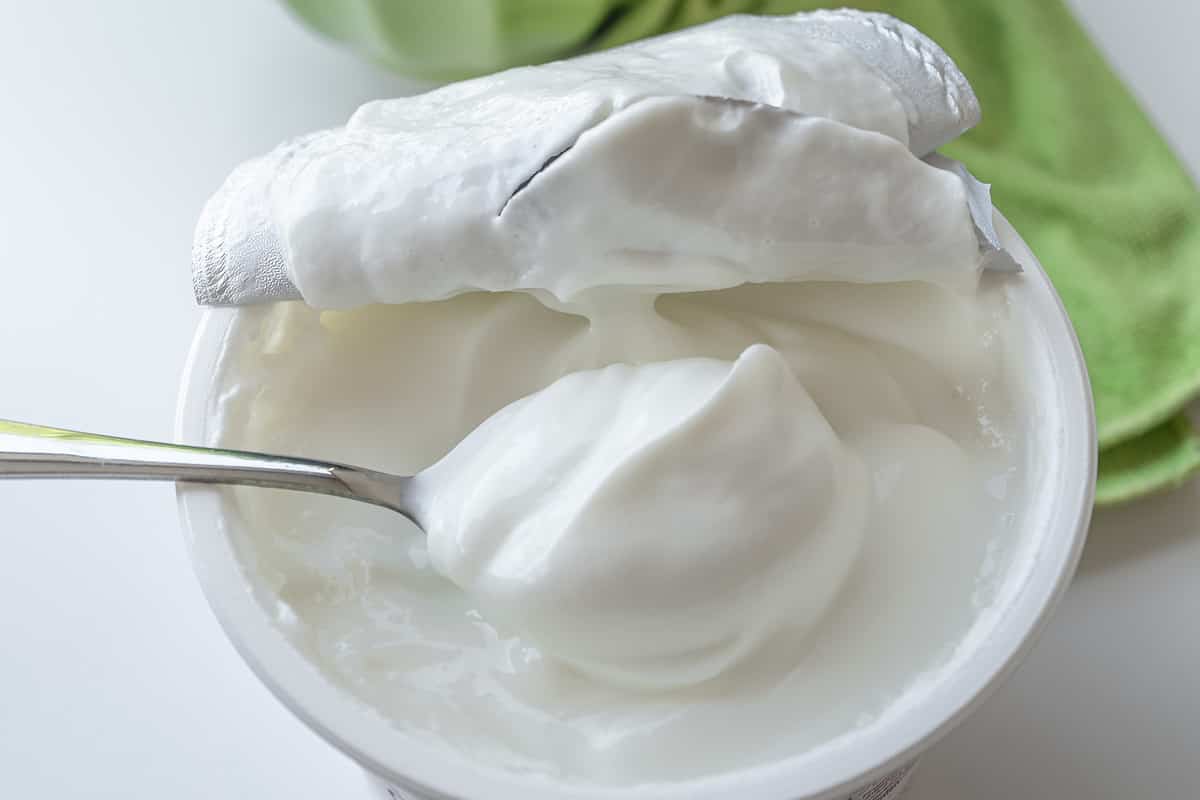
Greek yogurt provides a thick and creamy base for fruits and other treats. It's also great in smoothies!
©iStock.com/Miki1988
How Greek Yogurt is Made
Greek yogurt is made through the same fermentation process as labneh. Some brands will add more milk cultures to the raw dairy at the beginning. This is what results in the thick consistency of the eventual Greek yogurt. Either way, the dairy milk goes through pasteurization, the process of heating to kill off any bad bacteria. The next step is to add the bacterial cultures. Then the yogurt is fermented for long enough to achieve the classic tangy flavoring. This mixture is then strained, but not as much as labneh is, and then refrigerated and flavored (via Oikos). These days, there are numerous brands and flavorings of Greek yogurt.
Popular Uses
Greek yogurt is a versatile dairy product. Use it straight up, or mix it with fruits, honey, and other garnishes to provide a sweet and tasty treat. The plain variation can be a great topping for heartier savory soups and stews. Add it to smoothies for a thicker consistency, or into baking recipes for added creamy moisture. Put it into dressings or marinades or thin it out and add some spices and oils for a Labneh substitute!
- The must-have convenient reference guide for every home cook!
- Includes more than 8,000 substitutions for ingredients, cookware, and techniques.
- Save time and money on by avoiding trips to grab that "missing" ingredient you don't really need.
Possible Alternatives To Labneh or Greek Yogurt
If dairy is a no-go, there are alternative-milk yogurts available at most local grocery stores. And it is totally easy to make a labneh or Greek yogurt dish using cashew or almond-based yogurts instead of dairy. Alternatively, if you're cooking something that needs a savory sauce and you don't have labneh on hand, you can use some Greek yogurt. Simply thin down Greek yogurt to create a similar sauce! Labneh may be a harder trade-in for Greek yogurt, but in a pinch, you can forgo the spices and add honey, fruit, and maybe some granola!
Are Labneh And Greek Yogurt The Same Thing?
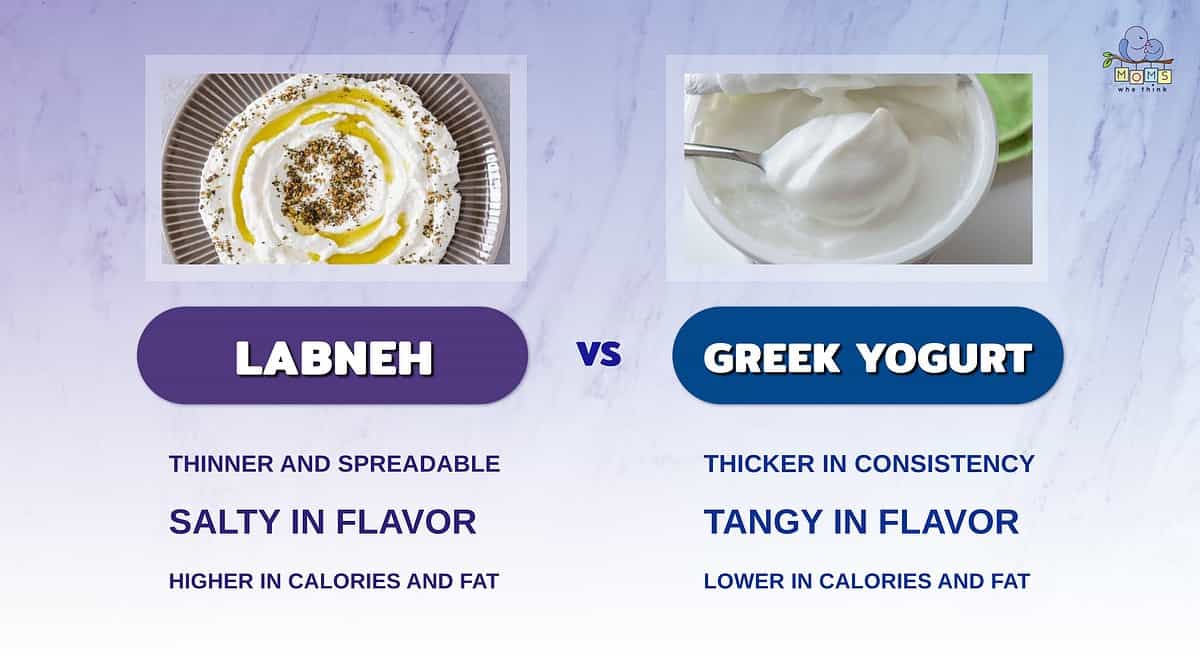
- Labneh is thinner than Greek yogurt, making it spreadable. Greek yogurt can be used as a topping, but it isn't as easy.
- Interestingly, labneh is salty in flavor. This is a big difference compared to Greek yogurt, which is tangy in flavor.
- Labneh is higher in calories and fat compared to Greek yogurt. However, labneh also has more protein. Greek yogurt still has quite a bit of protein, so it is probably a better option for those on a diet due to the lower calories and fat content.
So, what's the conclusion of the great labneh vs. Greek yogurt debate? While the two have some similarities in use and are processed in much the same way, the soft cheese-like consistency of labneh is different than the thick and creamy base of Greek yogurt. Each can be used in sweet and savory dishes, but they do provide a different kind of flavoring that is important to consider.
Looking for a great recipe to try that packs in the health benefits? Check out this blueberry smoothie:
Print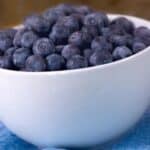
Greek Yogurt Blueberry Smoothie
Ingredients
- 1 Blueberry Greek Yogurt
- 1 Cup Frozen Berries
- 3/4 Cup water or milk
- 1/2 Banana
- Honey to taste (optional)
- Optional Protein additions: Chia Seeds, Oatmeal, Peanut Butter, or Almonds
Instructions
- Combine ingredients and blend.
- Enjoy!
The image featured at the top of this post is ©iStock.com/Veliavik
